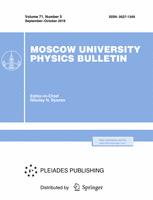Allowance for the space charge in relativistic microwave O-type devices encounters difficalties because of the absence of a rigorous theory of interaction of an ensemble of relativistic charged particles in nonuniform motion. A simplest model (thin relativistic electron beam (REB) without regard for thin metallic walls) has been employed to study electron grouping in the drift region and the amplification process in a traveling-wave tube of O-type (TWT-O) with irregular decelerating system. It is shown that: (a) During electron grouping, part of the REB energy is accumulated in the bunch in the form of interaction energy, which does not coincide with the relativistic potential energy and, for currents of the order of 200 A, attains 6 to 10% of the total REB energy; (b) The interaction energy leads to a TWT-O efficiency loss of the order of 10%; (c) The correction for the nonuniformity of the electron motion is insignificant, and, consequently, Lorentz' transformations can be used in the calculation of forces of the spatial charge in O-type devices.
Minsk Radio Engineering Institute



